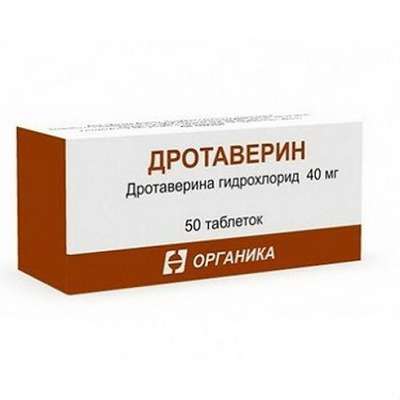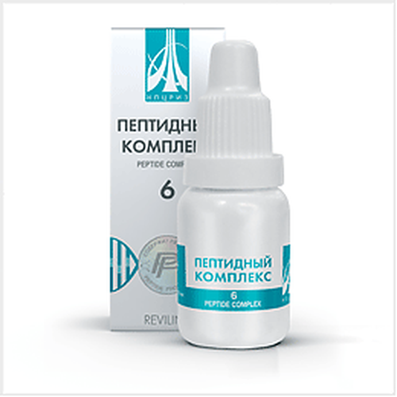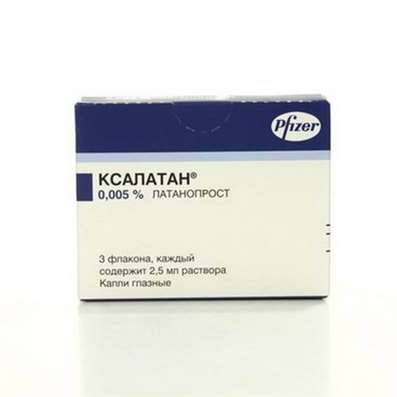Glutamate
22 Oct 2016
Transfer sensoric, NMDA-receptors and properties of glutamic acid.
At the base of the brain works on the interaction of nerve cells, and they talk to each other using substances called neurotransmitters. Mediators are quite a few, such as acetylcholine, Norepinephrine. One of the most important mediators, and perhaps most important is called glutamic acid or glutamate. If you look at the structure of our brain and on what substance use different nerve cells that release glutamate somewhere 40% of neurons, ie, a very large proportion of the nerve cells. With the release of glutamate in our brain, the brain and spinal cord, are transmitted main information streams: everything that is connected with sensory (vision and hearing), memory, movement, until it came to the muscles - all passed with the selection of glutamic acid. So, of course, the mediator deserves special attention and is very actively being studied.
According to their chemical structure glutamate - a fairly simple molecule. It is an amino acid, and amino acid food, i.e. we obtain a similar molecules in a composition of the proteins that eat. But I must say that the food glutamate (milk, bread or meat) in the brain is almost does not pass. Nerve cells synthesize this substance directly into the axon terminals, right in the structures that are part of the synapses, "the place" to continue to allocate in order to transmit information.
Make glutamate is very simple. The starting material is α-ketoglutaric acid. This is very common molecule, it turns out during the oxidation of glucose, in all cells, in all its many mitochondria. And then on the α-ketoglutaric acid is enough to transplant any amino taken from any amino acid, and has been obtained by glutamate, glutamic acid. Glutamic acid can be synthesized from more glutamine. This is also a nutritional amino acid, glutamate and glutamine is very easily converted into each other. For example, when glutamate fulfilled its function in the synapse and transmitted signal, further it is destroyed to form glutamine.
Glutamate - is an exciting neurotransmitter, which means it is always in our nervous system at the synapses, causing jitters and further signaling. This glutamate is different, for example, acetylcholine or norepinephrine, for acetylcholine and norepinephrine in synapses can cause certain agitation in the other - braking, they have a complicated algorithm. A glutamate in this sense is more simple and straightforward, but this really quite easy you will not find as glutamate there are about 10 types of receptors, that is, sensitive proteins, which are affected by this molecule, and various receptors at different speeds and performed with different parameters glutamate signal.
To improve brain activity there are nootropic drugs: Semax, Phenotropil.
Plant Evolution has found a number of toxins acting on glutamate receptors. For what it's plants, in general, quite understandable. Plants are generally opposed to the animals ate them, respectively, the evolution of toxic up with some protective structure that stop herbivores. The strongest plant toxins are associated with algae, algae toxins and it is capable of very powerful effect on glutamate receptors in the brain and cause total excitement and convulsions. It turns out that superactivation glutamate synapses - a very powerful excitation of the brain, convulsive state. Probably the most well-known molecule in this series called domoic acid, is synthesized by unicellular algae - algae there are, they live in the western Pacific Ocean, on the coast, for example, Canada, California, Mexico. Poisoning toxin of these algae is very, very dangerous. This poisoning is sometimes happens because unicellular algae feeds on zooplankton, all sorts of small crustaceans or, for example, bivalves, when filtered water withdraws these algal cells, and then in some mussel or oyster is too high a concentration of domoic acid and you can seriously poisoned.
Registered even deaths among people. They are, however, sporadic, but nevertheless it shows the power of this toxin. And it is very characteristic is domoic acid poisoning in birds. If some seabirds that eat again small fish, feed on zooplankton, too many get domoic acid, there is a characteristic of psychosis: any seagulls or pelicans cease to be afraid of large objects and, on the contrary, they are attacked, you have become aggressive . There was a whole epidemic of poisoning somewhere in the early 1960s and newspaper reports about this epidemic of "bird psychoses" inspired Daphne du Maurier to the fact that she wrote the novel "The Birds", then Alfred Hitchcock shot the classic thriller "The Birds" where you can see thousands of very aggressive seagulls that plagued the main characters of the film. Of course, the reality of global poisoning was not, but nevertheless, domoic acid is very characteristic effects, and it and similar molecules, of course, is very dangerous for the brain.
We eat glutamic acid and glutamate like her in large numbers just to food proteins. Our proteins that are part of different food products comprise 20 amino acids. Glutamate and glutamic acid are composed of twenty. Moreover, they are most common amino acids when the structure of totally see proteins. As a result, the day with the usual food we eat from 5 to 10 grams of glutamine and glutamate. At the time, with great difficulty to believe that glutamate acts as a neurotransmitter in the brain, because it turns out that the substance that we literally consume huge doses in the brain performs such subtle features. There was such a logical disconnect. But then we realized that, in fact, the food glutamate in the brain almost does not pass. During this need thanks structure called blood-brain barrier, i.e. special cells surround all capillaries, all minor vessels that penetrate the brain and fairly tight control of blood flow of chemicals into the nervous system. If not this, then what ever eaten burger bun or would cause us seizures, and this, of course, no one needs. Therefore, the food hardly passes glutamate in the brain and, indeed, is synthesized in order to perform a direct mediator functions synapses. However, if you eat a lot of glutamate at one time, a small amount of still penetrates into the brain. Then it may be a little excitement, the effect of which is comparable to a cup of strong coffee. This effect of high doses of dietary glutamate is known, and it often occurs when a person uses the glutamate in large quantities as a food additive.
The fact that our flavor system is very sensitive to glutamate. Again, this is due to the fact that a lot of glutamate in proteins. It turns out that the evolution of the taste system tuning for chemical analysis of food, it is identified as a sign of glutamate protein food, so we must eat protein because protein - it is the main building blocks of our body. Similarly, glucose our gustatory system learned very well to detect, because glucose and monosaccharides like it - it is the main source of energy and protein - the main building material. Therefore, taste the system is configured to identify glutamate is a signal of a protein food, and along with the sour, sweet, salty, bitter taste we have in terms of sensory cells that respond precisely to glutamate. And glutamate - is known to everyone, and even the so-called flavor. Call it flavor enhancer is not entirely correct, because the glutamate taste of its own, which by significance is as great as bitter, sour, sweet and salty.
I must say that the existence of glutamate taste has been known for over a hundred years. Japanese physiologists discovered this effect because in Japanese and Chinese cuisine glutamate (in the form of soy sauce, or gravy, which is made from seaweed) is used for a long time. Accordingly, the question arises: why they are so delicious taste, and why this is so different from the standard flavors? Next glutamate receptors, and then glutamate are already used in almost pure form (E620, E621 - sodium glutamate) were discovered, in order to add the most different food. Sometimes it happens that glutamate start blaming all the deadly sins, called "another white death": salt, sugar and glutamate - white death. This, of course, greatly exaggerated, because I repeat: for the day with the usual food we eat 5 to 10 grams of glutamate and glutamic acid. Therefore, if you add a little bit of glutamate in food for the appearance of the meat flavor, there is nothing to worry, though, of course, the excess is not useful.
By glutamate, indeed, many receptors (about 10 types of receptors), which is carried out at a different rate signals glutamate. These receptors are studied mainly from the point of view of the analysis of mechanisms of memory. When our brain and the cerebral cortex there is memory, it really means that between the nerve cells that transmit some information flow, begin to work more actively synapses. The main mechanism of activation of synapses work - is to increase the effectiveness of glutamate receptors. Analyzing the various glutamate receptors, we see that different receptors in different ways change their effectiveness. Perhaps the most studied - the so-called NMDA-receptors. This acronym, it stands for N-methyl-D-aspartate. This receptor responsive to glutamate and NMDA. characteristic of the NMDA-receptor, it is able to be blocked by magnesium ions, and if attached to a magnesium ion receptor, this receptor is not functioning. That is, you get the synapse, which have receptors, but these receptors are switched off. If the neural network was some strong and important signal that the magnesium ions (also called magnesium stoppers) detached from the NMDA-receptor, and synapse begins literally instantly work at times more effectively. For information transfer level it just means no one to record a memory trace. In our brain there is a structure called the hippocampus, there is just a lot of synapses with NMDA-receptors, and the hippocampus is perhaps the most studied in terms of the mechanisms of memory structure.
But the NMDA-receptor, the appearance and maintenance of the magnesium cork - is a mechanism for short-term memory, because the tube can leave and then come back - if we forget something. If long-term memory is formed, there is much more difficult, and work there other types of glutamate receptors that are able to transmit a signal directly to the nuclear DNA from the membrane of the nerve cell. And having received this signal, nuclear DNA triggers the synthesis of additional receptors of glutamic acid, and these receptors are embedded in the synaptic membrane and synapse begins to work more efficiently. But this is not instantaneously as in the case of magnesium ejection tube, but requires several hours requires repetitions. But if it really happened, a good long time, and it is the foundation of our long-term memory.
Of course, pharmacologists use glutamate receptors, in order to influence various cerebral functions primarily to reduce the excitation of the nervous system. Very known drug called ketamine. He works as an agent for anesthesia. Ketamine is also known as a molecule with a narcotic effect, because when you exit the anesthesia often occur hallucinations, so ketamine attributed also to the drugs hallucinogenic, psychedelic action with them is very difficult. But in pharmacology it is often the case: the substance is a necessary drug has some side effects, which in the end lead to the fact that you need the dissemination and use of this substance is very tightly controlled.
Another very well known molecule in connection with the glutamate - is memantine, a substance capable of fairly soft block NMDA-receptors and ultimately lowers the activity of the cerebral cortex in a variety of areas. Memantine is used over a fairly wide circle situations. His pharmacy name - "Akatinol". It is used to reduce the total level of excitement to weaken the likelihood of seizures, and, perhaps, the most active use of memantine - a situation neurodegeneration and Alzheimer's disease.

 Cart
Cart





